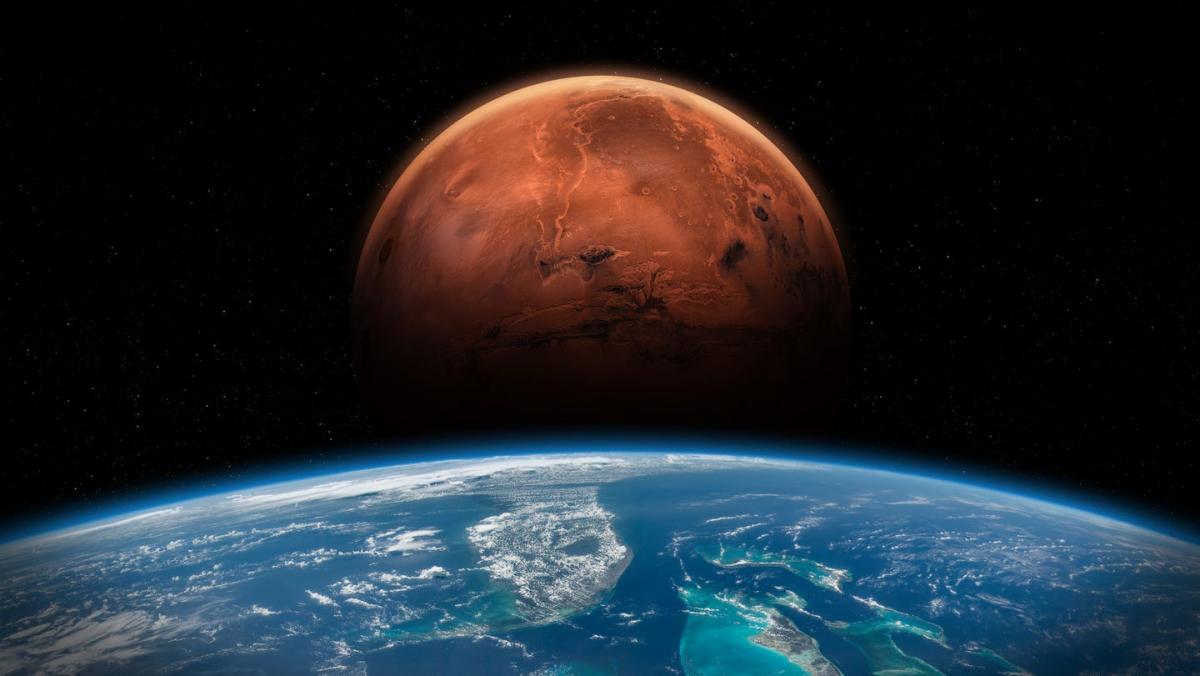-
In its ancient past, Mars likely contained many of the necessarily ingredients for microbial life to flourish on its surface.
-
Now, a new discovery by NASA’s Perseverance rover shows a trifecta of compelling evidence—including the presence of water, organic compounds, and a chemical energy source—all on one rock located in the Jezero Crater.
-
Although this is the best clue yet that microbial life existed on Mars, there are still other explanations that could explain this geologic display without the existence of microbes.
“Is there life on Mars” is a question that has vexed astrobiologists and David Bowie alike. While the latter imagined some macabre collection of arachnids on the Red Planet, NASA scientists are fixated on finding evidence that microbial life once flourished on the fourth rock from the Sun. So fixated, in fact, that the space agency has spent more than $5 billion getting two immensely complicated robotic rovers—Curiosity and Perseverance—onto the Martian surface with this specific microbial mission in mind.
Now, one of those rovers might’ve discovered one of the most compelling pieces of evidence for Martian microbial life. Located on an arrowhead-shaped, three-foot-long rock nicknamed “Cheyava Falls” in the Jezero Crater (the 28-mile-wide crater that Perseverance has called home for the past three years), this “piece of evidence” is actually a trifecta of data points that suggest the presence of past microbial life. The rock in question features two vertical veins of calcium sulfate that likely formed from past water, and these stripes both flank a red band of rock filled with “leopard spots.”
NASA has discovered evidence of past water on Mars before, but it’s this narrow band of rock that brings new meaning to this discovery. Using its SHERLOC (Scanning Habitable Environments with Raman & Luminescence for Organics & Chemicals) and PIXL (Planetary Instrument for X-Ray Lithochemistry) instruments, Perseverance determined the existence of organic compounds within the rock. Oh, and those “leopard spots?” Those likely indicate chemical reactions that could’ve supplied energy to ancient microbial Martians.
While each of these discoveries—the presence of water, organic compounds, and chemical reactions—would be notable even if discovered separately, NASA has never seen all three in one location, meaning the geological chemistry of Cheyava Falls is possibly our best clue yet that Mars once hosted life.
“Cheyava Falls is the most puzzling, complex, and potentially important rock yet investigated by Perseverance,” Caltech’s Ken Farley, Perseverance project scientist, said in a NASA press statement. “We have our first compelling detection of organic material, distinctive colorful spots indicative of chemical reactions that microbial life could use as an energy source, and clear evidence that water—necessary for life—once passed through the rock.”
While this site is particularly exciting, it’s far from the first Martian discovery to cause considerable microbial hype. Just earlier this year, scientists studying a 2017 soil analysis from Curiosity’s ongoing mission in Gale Crater discovered an abundance of manganese in the soil—something that usually requires the presence of oxygen and (you guessed it) microbes.
But all of these discoveries come with more than a few caveats. In Curiosity’s case, too little is known about the Mars’ oxidation process to be certain that microbes existed in Gale Crater, and this new discovery also isn’t immune from scientific scrutiny. One big head scratcher is the presence of millimeter-sized olivine crystals—a mineral that forms from magma. This may possibility explain how past volcanic activity could produce this geologic phenomena without relying on the presence of microbes at all.
“We have zapped that rock with lasers and X-rays and imaged it literally day and night from just about every angle imaginable,” Farley said in the press statement. “Scientifically, Perseverance has nothing more to give. To fully understand what really happened in that Martian river valley at Jezero Crater billions of years ago, we’d want to bring the Cheyava Falls sample back to Earth, so it can be studied with the powerful instruments available in laboratories.”
The “six-wheeled geologist” (as NASA calls it) doesn’t contain an onboard lab like its sister rover, Curiosity. But that’s actually a feature—not a flaw. NASA originally designed Perseverance to also be a sample retrieval mission, meaning that the space agency would send an additional spacecraft to retrieve samples from Perseverance and bring them back to Earth for further study.
However, with the costs of such a mission edging into the $11 billion range, bringing back samples of this Martian geologic wonder is in now question—as is the possibility of definitively understanding if there was once microbial life on Mars.
You Might Also Like
